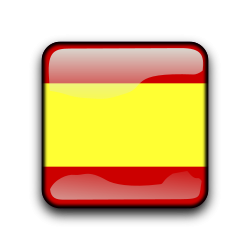|
 El llamado "Cancho Castillo" es una enorme "piedra caballera" ubicada en el berrocal de la dehesa boyal de Peraleda. El llamado "Cancho Castillo" es una enorme "piedra caballera" ubicada en el berrocal de la dehesa boyal de Peraleda.
Un berrocal es el paisaje resultante del lento proceso erosivo sobre las rocas graníticas, y se caracteriza por la formación de gran cantidad de bloques redondeados, bolos, "rocas en seta" y "peñas caballeras" esparcidas por toda la superficie de los batolitos. Las rocas graníticas se erosionan superficialmente siguiendo los planos de fractura (diaclasas) los cuales se agrandan por la acción del agua atmosférica que ataca y disgrega los minerales que constituyen el granito (cuarzos, feldespatos y micas) y a lo largo del tiempo va conformándose el berrocal. Los berrocales se denominan en Extremadura berruecos o barruecos.
Los granitos del Berrocal de Peraleda son fundamentalmente de grano fino con dos micas, aunque también podemos encontrar otros con grandes cristales de feldespatos orientados y filones de aplitas, pegmatitas y cuarzos, relacionados con las numerosas líneas de fracturas paralelas, de dirección noreste-suroeste, que limitan y compartimentan interiormente este enorme batolito, las cuales son aprovechadas por los arroyos que nacen en las Sierras de la Breña y guían sus aguas hasta el cercano río Tajo. Sobre estos granitos se han depositado materiales terciarios de edad pliocena ("rañas"), constituidos por arcillas, arenas y cantos rodados de cuarcitas procedentes de las Sierras de las Villuercas.
|
 The "Cancho Castillo" is a huge "tor" situated in the berrocal of the common grazing land of Peraleda. The "Cancho Castillo" is a huge "tor" situated in the berrocal of the common grazing land of Peraleda.
A berrocal is the landscape that results from the slow erosive process on the granitic rocks, and is characterised by the formation of a large number of rounded blocks, boulders, “mushroom rocks” and “tors” scattered all over the surface of the batholiths. The granitic rocks have been superficially eroded following the fracture planes (diaclases) enlarged by the action of the atmospheric water that attacks and breaks up the minerals that make up the granite (quartzes, feldspars, and micas) to shape the berrocal over time. In Extremadura berrocales are known as berruecos or barruecos.
The granites of the Berrocal de Peraleda are essentially fine-grained with two micas, although others can also be found with large crystals of orientated feldspars and lodes of aplites, pegmatites, and quartzes. They are related to the numerous parallel fracture lines in a northeast-southwest direction that limit and compartmentalise the interior of this huge batholith, which are made use of by the streams that originate on the Sierra de la Breña and flow into the nearby River Tajo. Tertiary materials from the Pliocene age (rañas) have been deposited on these granites; they consist of clays, sands, and quartzite boulders from the sierras of Las Villuercas.
|
|
El "lugar mágico" del Cancho Castillo, en cuya parte inferior hay una gran cavidad que pudo ser refugio de pastores y tal vez santuario rupestre de los primeros pobladores de estas tierras, como lo atestiguan los restos de cerámica y los numerosos grabados rupestres que se encuentran en su base: cazoletas, antropomorfos, zoomorfos, soliformes..., testigos del paso de pueblos del Neolítico y Calcolítico, e incluso romanos con una inscripción latina. Con su característica forma de enorme venera, o de proa de barco, no es raro que haya atraído religiosidad y misterio desde la prehistoria.
|
The “magic place” of the Cancho Castillo, the large cavity in the lower part of which could have served as a shelter for shepherds and was perhaps a rock sanctuary for the first colonists of this area. This is borne out by pottery remains and numerous cave engravings at its base: pans, anthropomorphs, zoomorphs, soliforms..., that are witnesses of the passage of Neolithic and Chalcolithic peoples and even Romans with a Latin inscription. With its characteristic shape of a huge scallop or the prow of a ship, it is not surprising that it has attracted religious devotion and been a place of mystery since prehistoric times.
|
|
Para que podáis loguear este earthcache como encontrado, debéis:
1º Mandarnos un e-mail contestando a éstas preguntas:
-. Los berrocales son el resultado de una erosión producida por:
a) El viento y el agua impactando sobre las rocas y fracturándolas.
b) El agua actuando químicamente sobre la roca.
c) El agua formando cuñas al helarse y disgregando la roca.
d) El modelado fluvial.
-. ¿Cual es el tamaño del grano del Cancho Valdecastillo? ¿Fino o grueso?
-. Bajo el Cancho Valdecastillo hay dos piedras con numerosas oquedades ¿cuántas ves de diámetro mayor de 5 cm?
-. ¿Qué altura aproximada tiene el Cancho Valdecastillo?
2º [Opcional] Subir una foto desde el lugar con vuestro GPS.
Los logs en los que se incluyan las respuestas a las cuestiones planteadas serán borrados sin explicaciones.
|
To log this earthcache as found it you should:
1º Send us an e-mail with the answers of the following questions:
-. Spheroidal wheathering is the landscape that results from the erosion caused by:
a) The wind and water eroding and fracturing the rocks.
b) The chemical action of water over the rocks.
c) The ice-wedge effect on rock fragmentation.
d) The fluvial erosion
-.What is the size of grain Cancho Valdecastillo? Thin or thick?
-. Under the Cancho Valdecastillo two stones with numerous hollows. How many have a diameter greater than 5 cm?
-. What is the approximate height of the Cancho Valdecastillo?
2º [Optional] Take a photo of the place with you GPS in it.
Logs with answers included will be deleted.
|